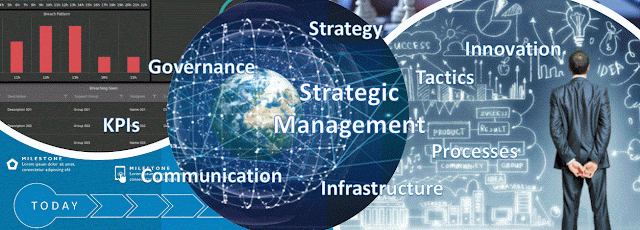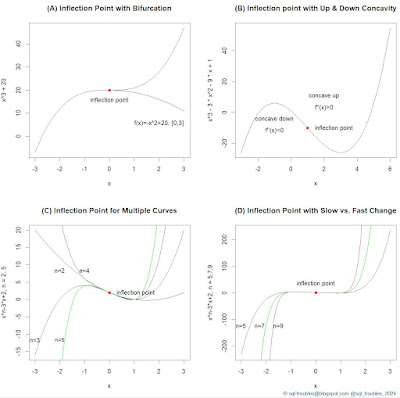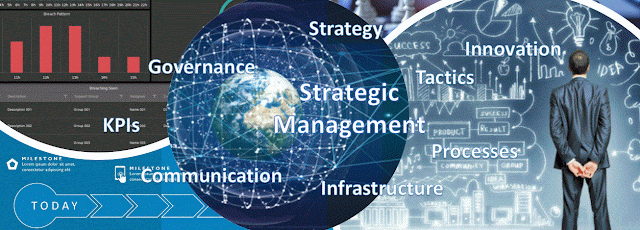"The insights gained and garnered by the mind in its wanderings among basic concepts are benefits that theory can provide. Theory cannot equip the mind with formulas for solving problems, nor can it mark the narrow path on which the sole solution is supposed to lie by planting a hedge of principles on either side. But it can give the mind insight into the great mass of phenomena and of their relationships, then leave it free to rise into the higher realms of action." (Carl von Clausewitz, "On War", 1832)
"An Organization Chart is a cross section picture covering every relationship in the bank. It is a schematic survey showing department functions and interrelations, lines of authority, responsibility, communication and counsel. Its purpose is 'to bring the various human parts of the organization into effective correlation and co-operation'." (John W Schulze, "Office Administration", 1919)
"The pattern of personal characteristics of the leader must bear some relevant relationship to the characteristics, activities, and goals of the followers. [...] It becomes clear that an adequate analysis of leadership involves not only a study of leadership but also of situations." (R M Stodgill, "Journal of Psychology", 1948)
"The most elementary aspect of administration is organization the structure of social institutions and their constituent parts, the composition of economic enterprises and their various branches, the organization of governmental agencies and their numerous departments. As it is mainly a matter of structure, organization bears the same rudimentary relationship to administration as does the science of anatomy or skeletology to the field of medicine. An administrative organization can be sketched and charted just as the human body can be physically depicted. Apart from its graphic convenience and its 'teachable' quality, however, what intrinsic relationship does organization bear to administration?" (Albert Lepawsky, "Administration: the art and science of organization and management", 1949)
"Organization planning is the process of defining and grouping the activities of the enterprise so that they may be most logically assigned and effectively executed. It is concerned with the establishment of relationships among the units so as to further the objectives of the enterprise." (Ernest Dale, "Planning and developing the company organization structure", 1952)
"[...] authority - the right by which superiors are able to require conformity of subordinates to decisions - is the basis for responsibility and the force that binds organization together. The process of organizing encompasses grouping of activities for purposes of management and specification of authority relationships between superiors and subordinates and horizontally between managers. Consequently, authority and responsibility relationships come into being in all associative undertakings where the superior-subordinate link exists. It is these relationships that create the basic character of the managerial job." (Harold Koontz & Cyril O Donnell, "Principles of Management", 1955)
"If charts do not reflect actual organization and if the organization is intended to be as charted, it is the job of effective management to see that actual organization conforms with that desired. Organization charts cannot supplant good organizing, nor can a chart take the place of spelling out authority relationships clearly and completely, of outlining duties of managers and their subordinates, and of defining responsibilities." (Harold Koontz & Cyril O Donnell, "Principles of Management", 1955)
"It is probable that one day we shall begin to draw organization charts as a series of linked groups rather than as a hierarchical structure of individual 'reporting' relationships." (Douglas McGregor, "The Human Side of Enterprise", 1960)
"Linking the basic parts are communication, balance or system parts maintained in harmonious relationship with each other and decision making. The system theory include both man-machine and interpersonal relationships. Goals, man, machine, method, and process are woven together into a dynamic unity which reacts." (George R Terry, "Principles of Management", 1960)
"The leadership and other processes of the organization must be such as to ensure a maximum probability that in all interactions and all interactions and all relationships with the organization each member will, in the light of his background, values, and expectations, view the experience as supportive and one which builds and maintains his sense of personal worth and importance." (Rensis Likert, "New patterns of management", 1961)
"In some firms role relationships prescribed by the chart seemed to be of secondary importance to personal relationships between individuals." (Joan Woodward, Industrial Organization: Theory and practice", 1965)
"In complex systems cause and effect are often not closely related in either time or space. The structure of a complex system is not a simple feedback loop where one system state dominates the behavior. The complex system has a multiplicity of interacting feedback loops. Its internal rates of flow are controlled by nonlinear relationships. The complex system is of high order, meaning that there are many system states (or levels). It usually contains positive-feedback loops describing growth processes as well as negative, goal-seeking loops. In the complex system the cause of a difficulty may lie far back in time from the symptoms, or in a completely different and remote part of the system. In fact, causes are usually found, not in prior events, but in the structure and policies of the system." (Jay W Forrester, "Urban dynamics", 1969)
"The systems approach to problems focuses on systems taken as a whole, not on their parts taken separately. Such an approach is concerned with total - system performance even when a change in only one or a few of its parts is contemplated because there are some properties of systems that can only be treated adequately from a holistic point of view. These properties derive from the relationship between parts of systems: how the parts interact and fit together." (Russell L Ackoff, "Towards a System of Systems Concepts", 1971)
"Managing upward relies on informal relationships, timing, exploiting ambiguity, and implicit communication. And the irony of it all is that these most subtle skills must be learned and mastered by younger managers who not only lack education and directed experience in benign guerilla warfare but are further misguided by management myths which contribute to false expectations and a misleading perception of reality." (Richard T Pascale & Anthony G Athos, "The Art of Japanese Management", 1981)
"Every company has two organizational structures: the formal one is written on the charts; the other is the everyday living relationship of the men and women in the organization." (Harold Geneen & Alvin Moscow, "Managing", 1984)
"Most managers are reluctant to comment on ineffective or inappropriate interpersonal behavior. But these areas are often crucial for professional task success. This hesitancy is doubly felt when there is a poor relationship between the two. [...] Too few managers have any experience in how to confront others effectively; generally they can more easily give feedback on inadequate task performance than on issues dealing with another's personal style." (David L Bradford & Allan R Cohen, "Managing for Excellence", 1984)
"It seems to me that we too often focus on the inside aspects of the job of management, failing to give proper attention to the requirement for a good manager to maintain those relationships between his organization and the environment in which it must operate which permits it to move ahead and get the job done." (Breene Kerr, Giants in Management, 1985)
"Operating managers should in no way ignore short-term performance imperatives [when implementing productivity improvement programs.] The pressures arise from many sources and must be dealt with. Moreover, unless managers know that the day-to-day job is under control and improvements are being made, they will not have the time, the perspective, the self-confidence, or the good working relationships that are essential for creative, realistic strategic thinking and decision making." (Robert H Schaefer, Harvard Business Review, 1986)
"Architecture is defined as a clear representation of a conceptual framework of components and their relationships at a point in time […] a discussion of architecture must take into account different levels of architecture. These levels can be illustrated by a pyramid, with the business unit at the top and the delivery system at the base. An enterprise is composed of one or more Business Units that are responsible for a specific business area. The five levels of architecture are Business Unit, Information, Information System, Data and Delivery System. The levels are separate yet interrelated. [...] The idea if an enterprise architecture reflects an awareness that the levels are logically connected and that a depiction at one level assumes or dictates that architectures at the higher level." (W Bradford Rigdon, "Architectures and Standards", 1989)
"Leadership is always dependent upon the context, but the context is established by the relationships." (Margaret J Wheatley, "Leadership and the New Science: Discovering Order in a Chaotic World", 1992)
"Although the concept of an enterprise architecture (EA) has not been well defined and agreed upon, EAs are being developed to support information system development and enterprise reengineering. Most EAs differ in content and nature, and most are incomplete because they represent only data and process aspects of the enterprise. […] An EA is a conceptual framework that describes how an enterprise is constructed by defining its primary components and the relationships among these components." (M A Roos, "Enterprise architecture: definition, content, and utility", Enabling Technologies: Infrastructure for Collaborative Enterprises, 1994)
"Trust is the glue of life. It's the most essential ingredient in effective communication. It's the foundational principle that holds all relationships - marriages, families, and organizations of every kind - together." (Stephen Covey, "First Things First", 1994)
"A strategy is a set of hypotheses about cause and effect. The measurement system should make the relationships (hypotheses) among objectives" (and measures) in the various perspectives explicit so that they can be managed and validated. The chain of cause and effect should pervade all four perspectives of a Balanced Scorecard." (Robert S Kaplan & David P Norton, "The Balanced Scorecard", Harvard Business Review, 1996)
"[Schemata are] knowledge structures that represent objects or events and provide default assumptions about their characteristics, relationships, and entailments under conditions of incomplete information." (Paul J DiMaggio, "Culture and Cognition", Annual Review of Sociology No. 23, 1997)
"The Enterprise Architecture is the explicit description of the current and desired relationships among business and management process and information technology. It describes the 'target' situation which the agency wishes to create and maintain by managing its IT portfolio." (Franklin D Raines, 1997)
"Leadership has long been associated with authority - we tend to concentrate on the leader, to think of them as innately superior in some way, and take the followers for granted. But formal authority is only one possible part of leadership. Many leaders do not have it. In some cases, perhaps ‘companionship’ better describes the relationship between leader and followers." (Joseph O’Connor, "Leading With NLP: Essential Leadership Skills for Influencing and Managing People", 1998)
"An information system architecture typically encompasses an overview of the entire information system - including the software, hardware, and information architectures" (the structure of the data that systems will use). In this sense, the information system architecture is a meta-architecture. An enterprise architecture is also a meta-architecture in that it comprises many information systems and their relationships (technical infrastructure). However, because it can also contain other views of an enterprise - including work, function, and information - it is at the highest level in the architecture pyramid. It is important to begin any architecture development effort with a clear definition of what you mean by 'architecture'." (Frank J Armour et al, "A big-picture look at enterprise architectures", IT professional Vol 1" (1), 1999)
"Enterprise architecture is a family of related architecture components. This include information architecture, organization and business process architecture, and information technology architecture. Each consists of architectural representations, definitions of architecture entities, their relationships, and specification of function and purpose. Enterprise architecture guides the construction and development of business organizations and business processes, and the construction and development of supporting information systems." (Gordon B Davis, "The Blackwell encyclopedic dictionary of management information systems", 1999)
"The key element of an organization is not a building or a set of policies and procedures; organizations are made up of people and their relationships with one another. An organization exists when people interact with one another to perform essential functions that help attain goals." (Richard Daft, "The Leadership Experience", 2002)
"Organization charts are subject to important limitations. A chart shows only formal authority relationships and omits the many significant informal and informational relationships." (Harold Koontz and Heinz Weihrich, "Essentials Of Management", 2006)
"Enterprise architecture is the process of translating business vision and strategy into effective enterprise change by creating, communicating and improving the key requirements, principles and models that describe the enterprise's future state and enable its evolution. The scope of the enterprise architecture includes the people, processes, information and technology of the enterprise, and their relationships to one another and to the external environment. Enterprise architects compose holistic solutions that address the business challenges of the enterprise and support the governance needed to implement them." (Anne Lapkin et al, "Gartner Clarifies the Definition of the Term 'Enterprise Architecture", 2008)
"Systems thinking is a mental discipline and framework for seeing patterns and interrelationships. It is important to see organizational systems as a whole because of their complexity. Complexity can overwhelm managers, undermining confidence. When leaders can see the structures that underlie complex situations, they can facilitate improvement. But doing that requires a focus on the big picture." (Richard L Daft, "The Leadership Experience", 2008)
"One advantage that decision tree modeling has over other pattern recognition techniques lies in the interpretability of the decision model. Due to this interpretability, information relating to the identification of important features and interclass relationships can be used to support the design of future experiments and data analysis." (S D Brown, A J Myles, in Comprehensive Chemometrics, 2009)







